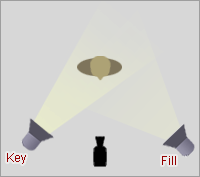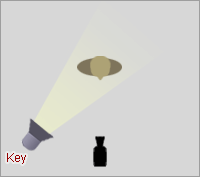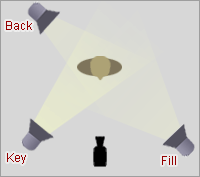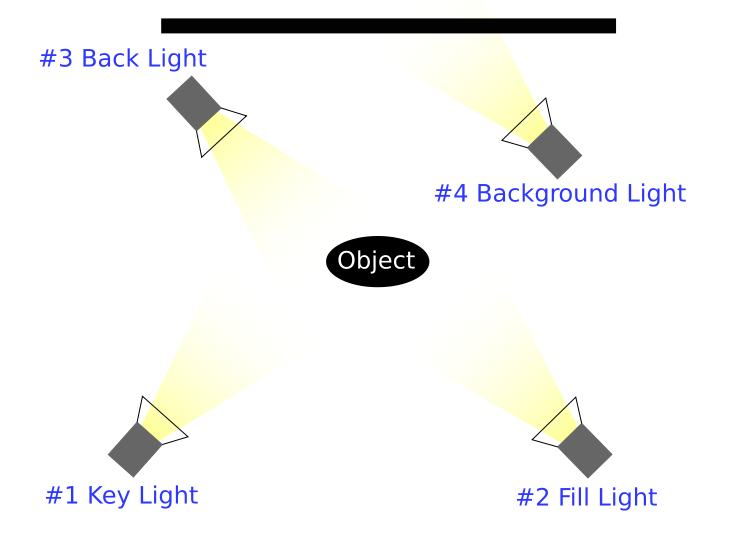Three-point lighting is a standard method used in media such as video, film, still photography and computer-generated imagery. By using three separate positions, the photographer can illuminate the shot's subject (such as a person) however desired, while also controlling the shading and shadows produced by direct lighting.
The key light, as the name suggests, shines directly upon the subject and serves as its illuminator; more than anything else, the strength, colour and angle of the key determines the shot's overall lighting design.
In indoor shots, the key is commonly a specialized lamp, or a camera's flash. In outdoor daytime shots, the Sun often serves as the key light. In this case, of course, the photographer cannot set the light in the exact position he or she wants, so instead arranges it to best capture the sunlight, perhaps after waiting for the sun to position itself just right.
Four-point lighting
The addition of a fourth light, the background light, makes for a four-point lighting setup. The background light is placed behind the subject(s), on a high grid, or low to the ground. Unlike the other three lights, which illuminate foreground elements like actors and props, it illuminates background elements, such as walls or outdoor scenery. This technique can be used to eliminate shadows cast by foreground elements onto the background, or to draw more attention to the background. It also helps to off-set the single eye nature of the camera, this means that it helps the camera give depth to the subject.
Key Light
This is the main light. It is usually the strongest and has the most influence on the look of the scene. It is placed to one side of the camera/subject so that this side is well lit and the other side has some shadow.

Fill Light
This is the secondary light and is placed on the opposite side of the key light. It is used to fill the shadows created by the key. The fill will usually be softer and less bright than the key. To acheive this, you could move the light further away or use some spun. You might also want to set the fill light to more of a flood than the key.
The back light is placed behind the subject and lights it from the rear. Rather than providing direct lighting (like the key and fill), its purpose is to provide definition and subtle highlights around the subject's outlines. This helps separate the subject from the background and provide a three-dimensional look.
Four-point lighting
The addition of a fourth light, the background light, makes for a four-point lighting setup. The background light is placed behind the subject(s), as mentioned before, on a high grid, or low to the ground.



No comments:
Post a Comment